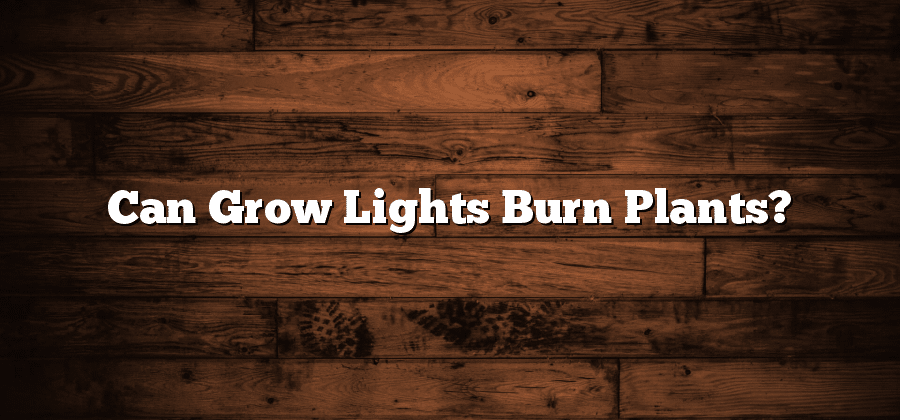Understanding the Effect of Grow Lights on Plants
The use of grow lights has revolutionized plant cultivation, allowing plant enthusiasts to create optimal growing conditions irrespective of the season or location. These artificial lights serve as a substitute for natural sunlight, providing plants with the necessary light energy for their photosynthesis process. By understanding the effect of grow lights on plants, growers can harness this technology effectively, leading to healthier and more vibrant plant growth.
Grow lights emit electromagnetic radiation, primarily in the blue and red spectrum, which are crucial for different stages of plant development. Blue light promotes vegetative growth, encouraging the growth of leaves and stems, while red light stimulates flowering and fruiting. The intensity and duration of light exposure are also important factors, as plants require a specific balance to thrive. By controlling these variables, growers can manipulate the effects of grow lights on plants, ensuring maximum productivity and efficiency in plant growth.
Factors Influencing Plant Burn from Grow Lights
Factors influencing plant burn from grow lights can vary depending on several key elements. One important factor is the type of grow light being used. Different types of grow lights emit different levels of heat and intensity, which can directly impact the plants. For example, high-intensity discharge (HID) lights such as metal halide and high-pressure sodium lights can produce a significant amount of heat, which can easily cause plant burn if not properly managed.
Another factor that can influence plant burn is the distance between the plants and the grow lights. Placing the lights too close to the plants can result in excessive heat exposure, leading to burn and damage. On the other hand, positioning the lights too far away can limit their effectiveness and result in inadequate lighting for the plants to thrive. Finding the optimal distance for placing grow lights is therefore crucial in preventing plant burn and ensuring healthy growth.
Types of Grow Lights and Their Impact on Plants
LED Grow Lights:
LED (Light Emitting Diode) grow lights have become increasingly popular among indoor gardeners due to their energy efficiency and effectiveness in promoting plant growth. LEDs emit light in specific wavelengths, which can be customized to meet the specific needs of different plants during various stages of growth. Different colors of LEDs, such as red and blue, can be combined to provide the optimum light spectrum for plants. These lights have a longer lifespan compared to other types of grow lights, making them a cost-effective option in the long run. Additionally, LED grow lights produce minimal heat, reducing the risk of plant burn and allowing for closer proximity to the plants.
High-Intensity Discharge (HID) Grow Lights:
HID grow lights are another popular choice among indoor gardeners. These lights include two main types: Metal Halide (MH) and High Pressure Sodium (HPS). Metal Halide lights emit a bluish-white light, which is ideal for promoting vegetative growth in plants. On the other hand, High Pressure Sodium lights emit a yellowish-orange light, suitable for the flowering and fruiting stages. The high-intensity output of HID grow lights is beneficial for plants with high light requirements. However, it is important to note that these lights can generate a significant amount of heat, and care must be taken to ensure the plants are not too close to the light source to prevent heat stress or burn.
Optimal Distance for Placing Grow Lights to Prevent Plant Burn
Grow lights are essential for indoor gardening, providing the necessary light spectrum and intensity for plant growth. However, it is crucial to place them at the appropriate distance from the plants to prevent burn and damage. The optimal distance for placing grow lights depends on factors such as the type of grow lights used and the specific needs of the plants being grown.
Different types of grow lights have varying heat and light intensities, which can affect plants differently. For instance, high-intensity discharge (HID) lights produce a lot of heat and should be positioned further away from the plants. On the other hand, light-emitting diode (LED) lights are more energy-efficient and emit less heat, allowing them to be placed closer to the plants. Determining the correct distance for each type of grow light is crucial to avoid burn and ensure optimal growth. Additionally, consideration should be given to the height and size of the plants, as taller plants may require lights to be placed higher to provide adequate coverage.
Managing Light Intensity to Avoid Plant Damage
Proper management of light intensity is crucial to ensure the well-being of plants and prevent damage. Plants require a specific level of light intensity to carry out photosynthesis effectively. Too much light intensity can lead to burn injuries on the leaves and stems, while insufficient light intensity may hinder the growth and development of plants. Thus, it becomes essential for growers to find the optimal balance and manage light intensity appropriately.
To manage light intensity effectively, growers can take several measures. One approach is to adjust the distance between the plants and the grow lights. This distance plays a significant role in controlling the light intensity reaching the plants. By placing the grow lights at the right distance, growers can create an environment in which plants receive an adequate amount of light without being overwhelmed. Additionally, using light reflectors or diffusers can help distribute the light evenly, reducing the chances of concentrated light beams causing damage to specific areas of the plant.






